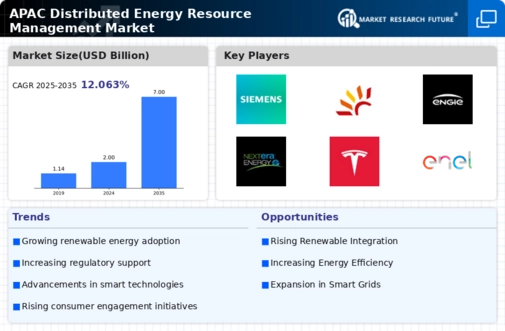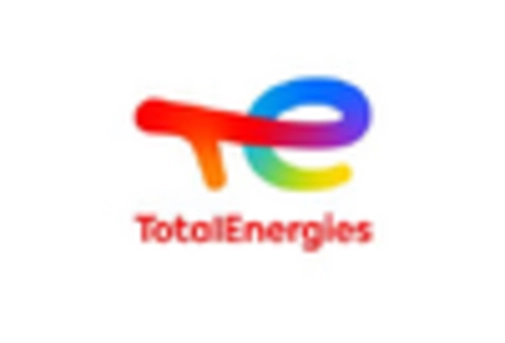The APAC Distributed Energy Resource Management Market is rapidly evolving due to increasing demand for sustainable energy solutions and the need for decentralized energy generation. The competition within this market is intense, characterized by advancements in technology, collaborations, and strategic partnerships among various players. As stakeholders seek to optimize energy assets and enhance grid stability, the emphasis has shifted toward innovative management systems that integrate an array of distributed energy resources including solar, wind, battery storage, and microgrids.
Countries in the APAC region are positioning themselves to leverage these technologies to not only improve energy security and reliability but also to support the global transition to renewable energy.
With regulatory frameworks evolving to support clean energy initiatives, the market provides opportunities for established firms and new entrants alike to carve out significant roles.GE Renewable Energy is a key player in the APAC Distributed Energy Resource Management Market, underpinning its presence with a robust portfolio of solutions that enhance renewable energy generation and integration. The company possesses a significant competitive edge attributed to its wide-ranging experience in wind and hydroelectric power solutions, contributing to the development of smart grids and microgrid technologies within the region.
GE Renewable Energy’s strengths lie in its commitment to innovation and sustainability, evidenced by the continuous enhancement of its energy management systems and its proactive engagement with local stakeholders to drive renewable energy projects. The company’s ability to rapidly adapt its technologies and strategies to meet the diverse regulatory and market conditions across different APAC countries solidifies its position as a leader in the energy space.Siemens has established a noteworthy presence in the APAC Distributed Energy Resource Management Market by offering a comprehensive suite of solutions designed to facilitate the management of distributed energy resources efficiently.
The company's strengths lie in its advanced digital twin technology and automation systems that promote enhanced operational efficiency and optimization of energy flows. Siemens provides integral products and services, including grid management software and energy storage solutions, that cater specifically to the needs of various APAC countries striving for energy transition. Additionally, Siemens has been active in strategic mergers and acquisitions, bolstering its capabilities in the energy sector and allowing the company to expand its offerings within the region.
These efforts underscore Siemens' commitment to fostering sustainable energy practices through cutting-edge technology and a collaborative approach to addressing the region's energy challenges.






















Leave a Comment